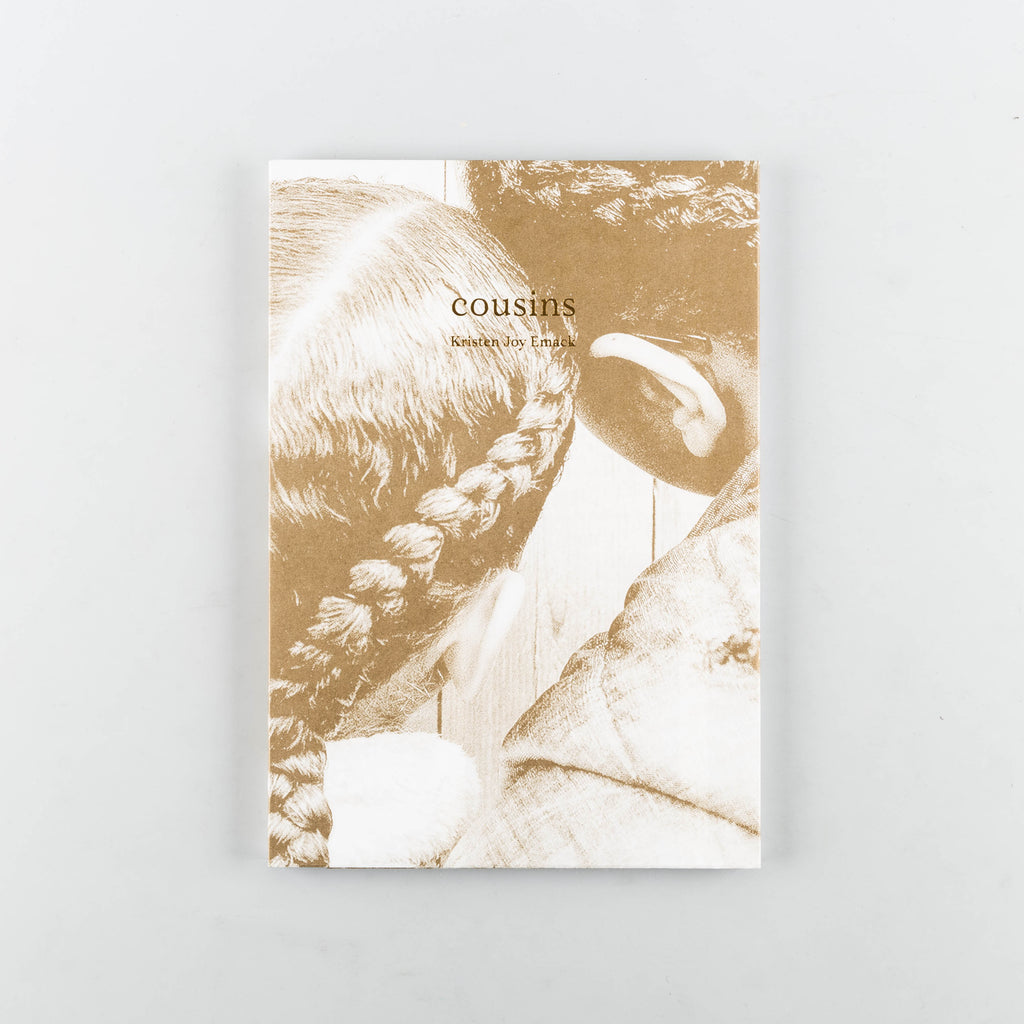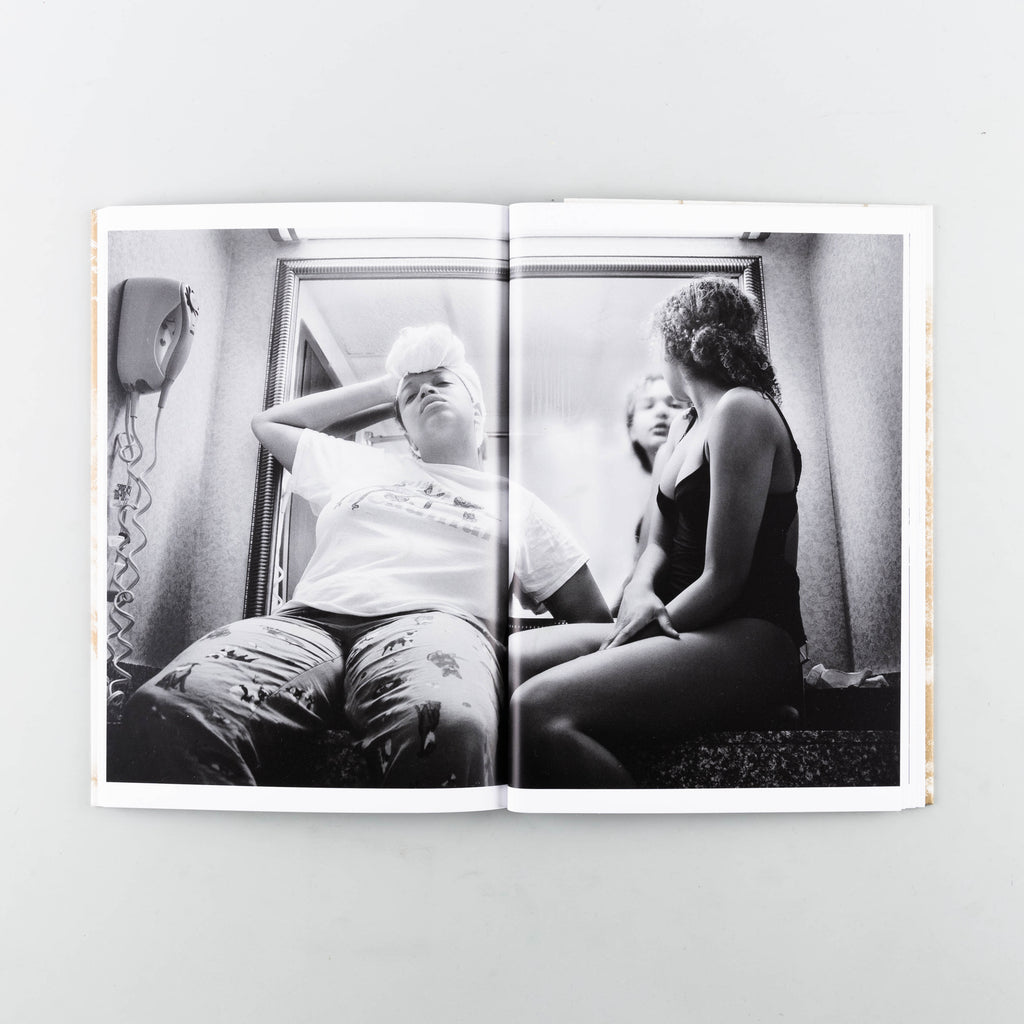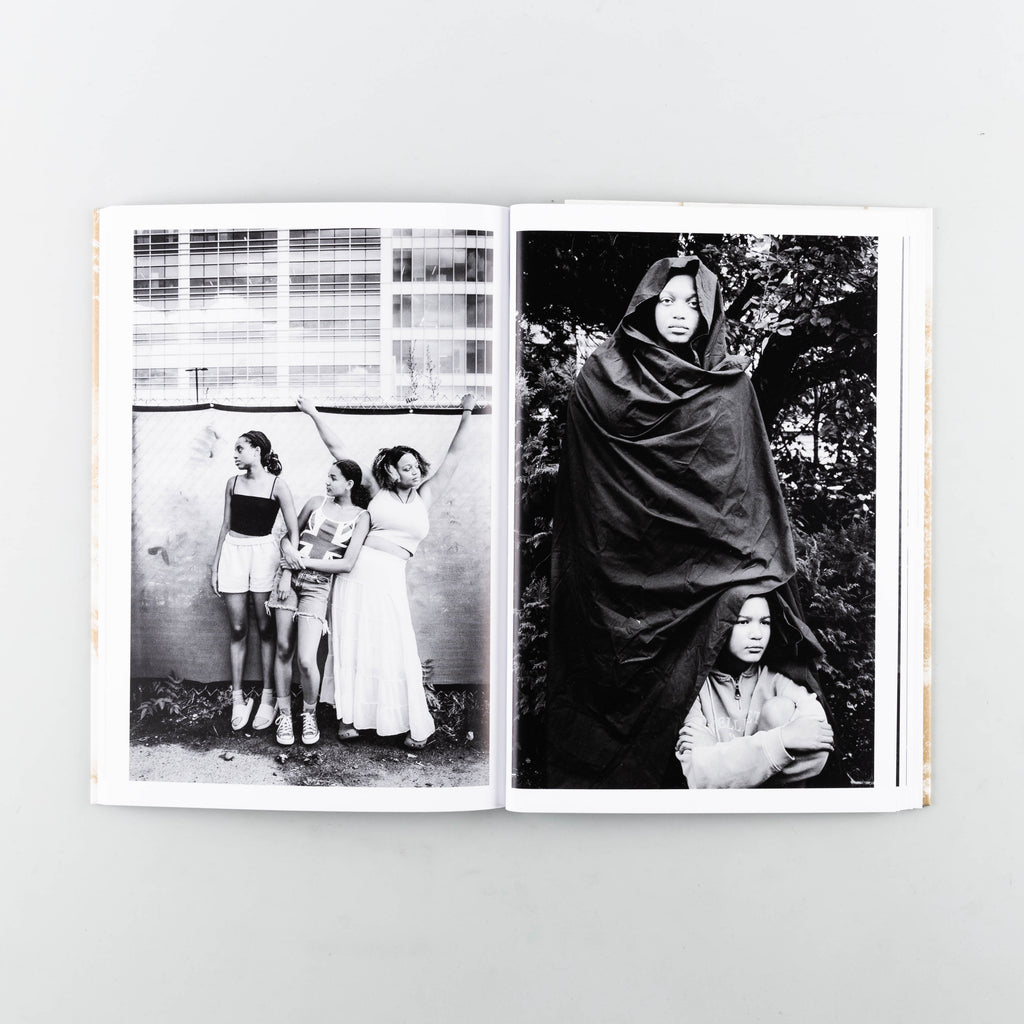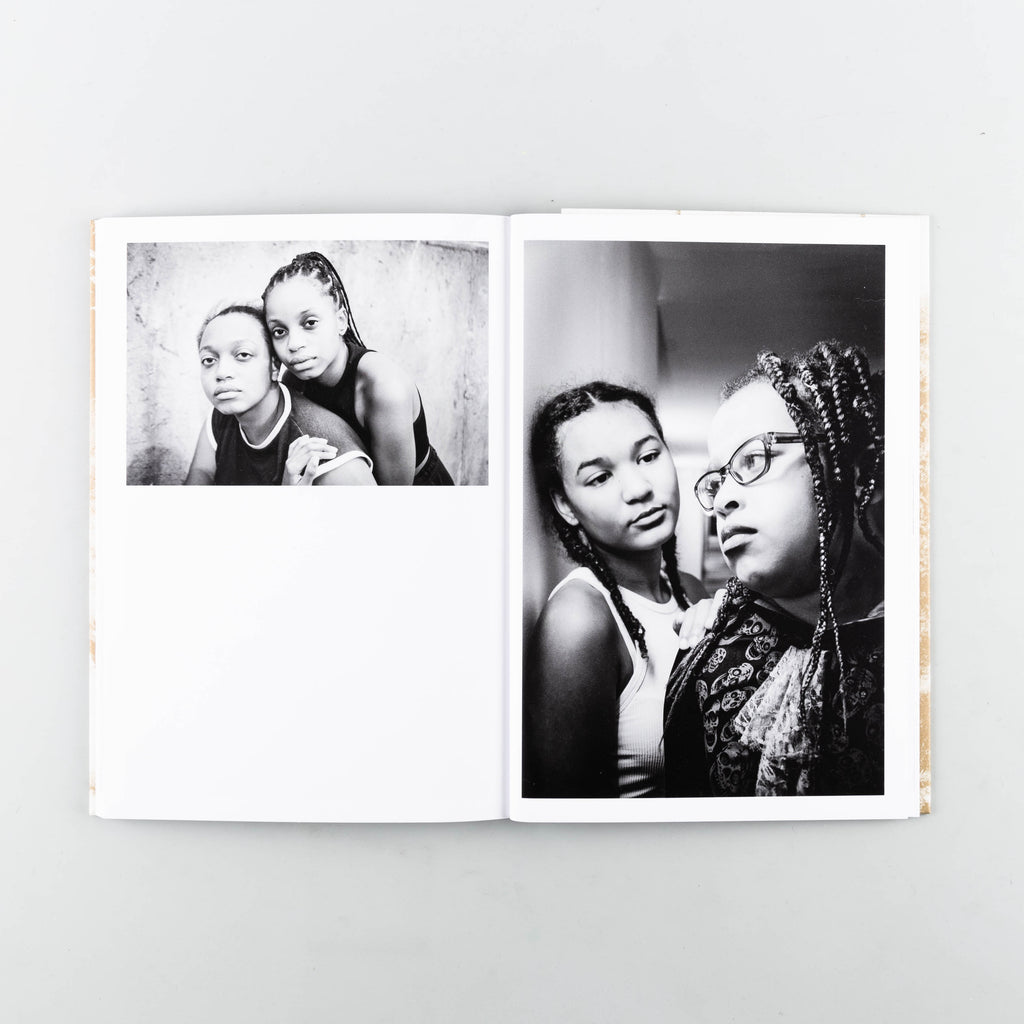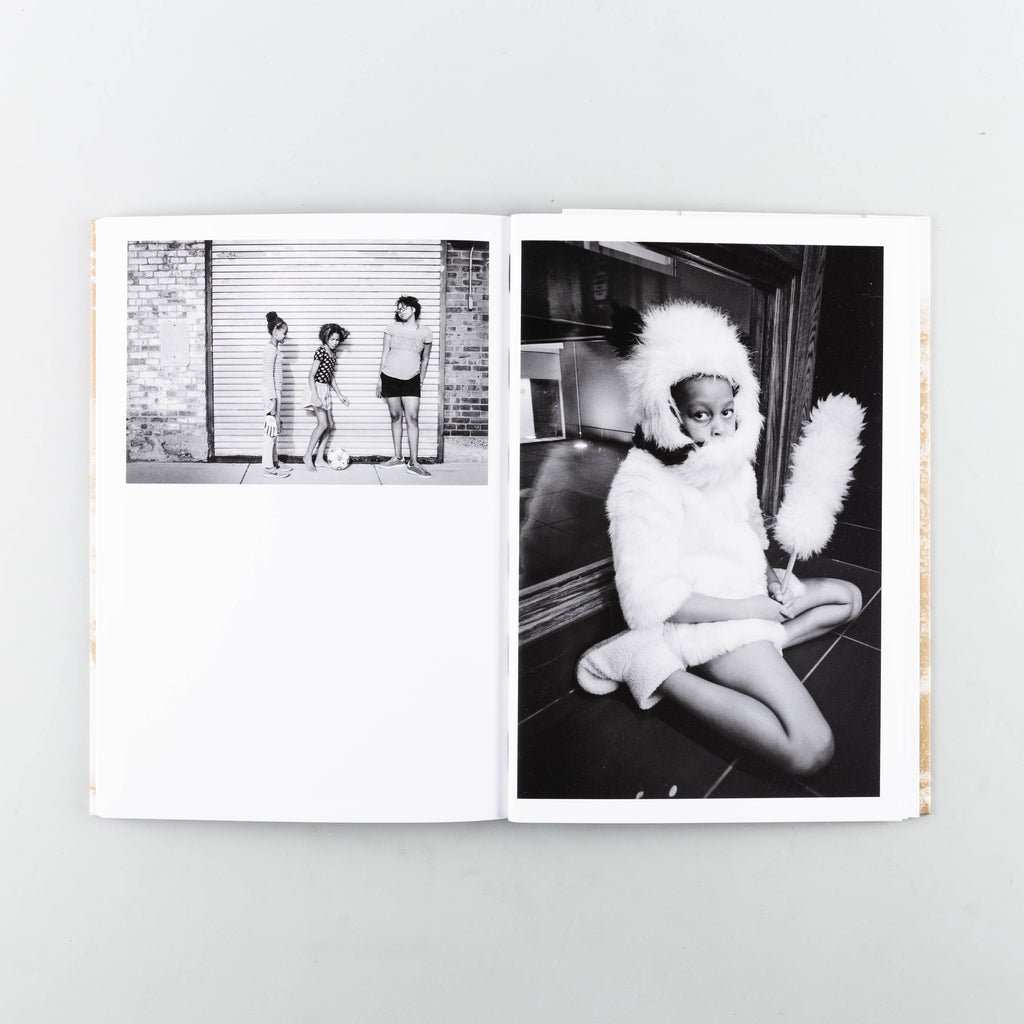Cousins
Andrea Modica
£45.00
Kristen Joy Emack’s Cousins explores what it means to be a young girl among young girls. In one photograph, three girls sit atop the ruffled covers of a bed pushed up against a wood-paneled wall. At center and slightly forward one girl appears upset and gazes downward beyond the... Read More
Kristen Joy Emack’s Cousins explores what it means to be a young girl among young girls. In one photograph, three girls sit atop the ruffled covers of a bed pushed up against a wood-paneled wall. At center and slightly forward one girl appears upset and gazes downward beyond the frame. A light shining on a second girl at right echoes the impression that she has an idea; she turns to the eldest girl, at left, in search of its confirmation. That girl looks forward toward the camera. Here, and throughout the series, Kristen captures the whimsicality of self-making. The girls look inward at their own bond, sometimes searching for who knows what to do, who to share in a laugh, or who to leave be. We see affirmation, challenge, and ambivalence. In the quiet intimacy of cousins we see thoughts, moods, and feelings unspoken but understood.
Kristen is photographing her family, but these are not traditional family pictures. A mother and an aunt, Kristen is also an artist and thus through the act of photographing the girls, they grow up being recognized by a loving adult as works of art. There is a profound messaging that occurs through the creation of this body of work: all of their introspections, interactions, experiences, idiosyncracies, emotions, and evolutions matter. It is powerful for these young, Black, girls to be seen and loved so fully—and to see and love themselves.
The photographs in this series are made all over but, like my own, the girlhood of these cousins is anchored in Cambridge, Massachusetts. Behind the physical markers that give us the look of a particular kind of diversity are little girls trying to Figure out who we are for ourselves first. Wrapped up in that are the tasks of trying to understand ourselves within our families, our families in context with other families, and how all of our families are marked by being situated here in Cambridge.
The city cherishes its diverse population, and yet, does not wholly
acknowledge the weight that is put upon the shoulders of people of color to be the representatives of its diversity. The city does not wholly reckon with the ways in which young people rely on each other to make sense of their interior lives, and how their lives are tethered to this ever-changing environment.93 92
But while the shared site of our upbringing does not always successfully foster the infinite modes of girlhood, Kristen and the cousins hold space for such variety by availing themselves of photography. Together, they play with visual possibilities to both imagine and image their connectedness. The cover image of this volume encapsulates this. The anti-portrait depicts the same style on three different textures of hair. It is an elegantly posed image of simultaneous sameness and difference: there are shared elements among the girls by way of being family, but each girl is an individual. She has her own needs, her own desires, and her own place within the family. She has her own way, her own texture.
The girls emerge as individuals through their relationships with one another. Looking at these photographs we see familial roles in action. In the angular spiral of limbs before leaves, one photograph of a double piggyback ride captures the girls in their intertwined metamorphosis from girlhood to young womanhood. The eldest provides the foundation—solid and confident—allowing two younger girls to place their trust in her.
As we observe the girls, the girls observe us too. In another photograph the younger girls stand on their own atop a tree stump as if they have bloomed from the earth. One cousin looks out, while the other looks back. We see them become aware of our gaze and respond to it. Our viewership shifts when they direct us how to see them. The girls harness their performance of self through their own gaze, gesture, and pose.
As this project spans the years of the girls’ lives, we watch them embrace photography as a tool. The cyclical practice of being photographed,
viewing and evaluating their own image, gaining new perspective on the personal and the interpersonal, and determining if and what to adjust is the very mode through which the girls come to be themselves. The girls become self-aware—and self-assured—not merely as a result of the passage of time, or “growing up,” but distinctly through their interactions with photography.
Kristen’s work gives form to both the interstitial and the decisive moments that define the cousins. Photography enables us to pause in all such moments and ascribe value to them thoughtfully and intentionally. Cousins showcases the serious and silly parts of the girls. The intellect, intuition, care, humor, doubt, rest, love, femininity, and bodies as well as the contradictions of each girl’s evolving self are all a matter of art. The girls are grounded not because they commit to a fixed version of themselves but because they are comfortable with myriad facets of themselves. With intimate feminine relationships of love and support at center, these photographs provide space for the girls themselves to be created and sustained by their bond.
Dr. Alisa Victoria Prince, PhD
